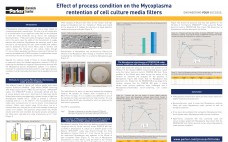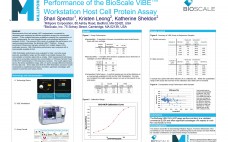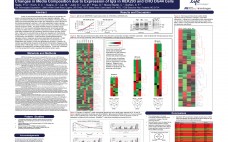A Mycoplasma contamination event can have a major impact on a biopharmaceutical manufacturer. The loss of a cell culture due to a contamination incurs significant costs that can be attributed to both the initial bioreactor set-up and to the subsequent decontamination. Production facility throughput may be affected and in the worst cases the ability of the manufacturer to supply patients with medicines. Mycoplasma are extremely small in size and lack a cell wall giving the cells some flexibility that enables…
Expression & Production
Engineering Analysis of Mixing in ATMI’s Bioreactors Using Computational Fluid Dynamics
The Integrity® PadReactor™ and Nucleo™ systems are a single-use bioreactors specifically designed to fulfill the needs of cell culturists. They are perfectly suited to laboratory environments, process develop¬ment centers, clinical material supply and flexible GMP manufacturing. The bioreactor vessel, which offers comparable functionality to classical stirred tank bioreactors, is a single-use bag integrating an internal paddle mixing and sparger system. This innovative bag design allows a non-invasive connection to the system. The paddle is enclosed in a medical grade ULDPE…
Viral Vaccine Manufacturing Scale Using the iCELLIstm Disposable Fixed-Bed Reactor
Viral vaccines are usually produced by anchorage-dependent cell lines. At industrial scale, these cells are either cultivated in static mode on multiplate systems (Roller bottles, Cell Factories, Cell Cube, etc.) or on suspended micro-carriers (porous or non-porous) in in bioreactors. Multiplate systems are bulky and require a lot of handling operations, whereas microcarrier cultures require numerous operations (sterilization and hydration of carriers,bead-to-bead transfers) from pr eculture to final process. However most of the currently available disposable reactors are not well…
Cell Culture Design Space Modeling using a Scale-Down Approach
As an industry initiative to “provide assurance of quality,” the ICH Q8 guideline proposes building quality into the design of experiments by defining the process design space within which critical product quality attributes are within an acceptable range. A characterized design space not only enhances process knowledge but also can later be utilized for process validation and regulatory filings, saving on the time and cost of additional filings if process changes are implemented in the future. Because it is neither…
Performance of the BioScale ViBE Protein Analysis Workstation Host Cell Protein Assay
Measurement of host cell protein (HCP) contaminants is essential for developing and monitoring an effective purification process for recombinant proteins. Of the multiple techniques available to quantify the concentrations of these contaminants, the most popular format uses polyclonal antisera in a sandwich ELISA. The purpose of this work is to evaluate the performance of a newly emerging technology; the BioScale ViBE™ Platform. Using an assortment of bioprocess samples selected from multiple stages of the purification process, ViBE Workstation performance was…
Changes in Media Composition due to Expression of IgG in HEK293 and CHO DG44 Cells
Quality of recombinant/therapeutic proteins produced by engineered cell lines is a concern shared by both manufacturers and regulatory agencies. New assays are needed to facilitate earlier and more rapid analysis of therapeutic protein quality. Cell culture supernatant contains secreted proteins that are indicative of the cellular condition and thus are potential indicators of recombinant protein quality. This study identified changes in secreted host cell proteins (HCP) from cell pools exhibiting varying levels of recombinant antibody expression as determined by quantitative…
Factory of the Future
Fed-batch and perfusion culture are two dominant modes of operation for mammalian-cell-culture based processes. Challenges in the industry (such as competitive products for the same indication or desired cost reductions) are forcing many to explore new production options. Increasingly popular is the application of the ATF™ System to generate ultra high viable cell concentrations (>100m cells/ml) for a “concentrated” or “intensified” process. The use of the ATF System in a typical concentrated fed-batch process is shown which has generated a…
Sartorius Stedim Biotech Filtration Trials with SAFC Ex-Cell Hydrolysate Fusion
SAFC has launched EX-CELL® CD Hydrolysate Fusion, the first fully chemically defined media supplement of its kind in the industry. Sartorius Stedim Biotech and SAFC Biosciences have recently announced a wide-ranging joint cooperation agreement to serve their customers. As a consequence of this effort, a range of 0.2 ÎĽm & 0.1 ÎĽm sterilizing grade filters from different membrane materials were tested for throughput & biological activity post-filtration. This paper provides an insight into superior total throughput performance of the Sartorius…








